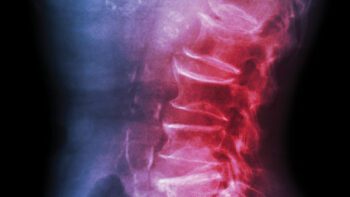By Tom Mroz, MD, Cleveland Clinic, Guest Editor-in-Chief
This was the Letter from the Guest Editor from the Spring 2023 Spine Health Journal.
Various clinical syndromes related to the neck can arise at any time during one’s life. Fortunately, episodes of neck pain or arm pain, weakness, and/or numbness (i.e. a cervical radiculopathy or “pinched nerve”) usually resolve quickly and without surgery. Cervical spine problems can cause, however, a fair amount of pain and disability for a minority of patients, and this can result in a consultation with a spine specialist. It is often difficult for patients to navigate the variety of spine specialists that include pain specialists, physiatrists, orthopaedic spine surgeons, and neurosurgeons. Similarly, patients can be confused by the differing treatment opinions that can be rendered for a single problem.
The purpose of the current Neck Problems edition is to shed light on the common conditions that patients face, and to provide a framework necessary to understand those conditions and treatment options. In this edition, we are fortunate to learn from world-subject-matter authorities.
Dr. Russ DeMicco, Medical Spine Director at Cleveland Clinic, is an expert clinician specializing in the nonoperative treatment of all degenerative spine conditions. In this edition he presents a tremendous summary of the common facets of neck pain, which are almost always treated successfully without surgery.
Dr. Jeffrey C. Wang, an internationally acclaimed leader on cervical spine surgery presents a concise summary of cervical radiculopathy. Dr. Wang has over thirty years of surgical expertise, and he is the Spine Center Director and Professor of Orthopaedic Surgery and Neurosurgery at the University of Southern California.
Dr. Michael P. Steinmetz is the Chair of Neurosurgery and Director of the Center for Spine Health at Cleveland Clinic. He provides a wonderful overview of cervical myelopathy, which is a constellation of signs and symptoms from spinal cord dysfunction due to spinal cord compression.
Dr. James Harrop, a national and international authority of spine surgery, is the Director of the Division of Spine and Peripheral Nerve Surgery at Thomas Jefferson University Hospital and the Past President of the Cervical Spine Research Society (CSRS). His article on the importance of neck motion and alignment has essential information for both younger and older readers.
Dr. Colin Haines is the Director of Research at The Virginia Spine Institute. He simplifies an otherwise complex topic of surgical options for the cervical spine, which can prepare the spine patient for a surgical discussion with their provider.
Last but certainly not least, Dr. John Shin is Professor of Neurosurgery at the Harvard Medical School, Chief of Spine Surgery at Massachusetts General Hospital, and Director of Spine Oncology & Spinal Deformity Surgery and of the Neurosurgery Spine Network. Dr. Shin provides a thorough, patient-centric review of failed neck surgery. The latter is perhaps the most frustrating and troubling condition for patients and surgeons alike. A careful attention to detail, goals and options by all stakeholders is critical when faced with revision cervical spine surgery.
As you will learn in this edition, there exist several common neck conditions and there are many medical and surgical treatment options for each condition. There are several key points to consider when faced with a cervical spine problem. I feel it is crucial that every patient become as informed as possible about their neck problem before deciding with their physician on treatment. Surgery should always be used as a last resort for all patients and for all conditions. However, there are instances when surgery is the correct option; thankfully, it most often will render an improved, durable outcome for the patient. It is incumbent on medical spine specialists and surgeons alike to ensure a transparent and exhaustive appreciation of the condition with every patient. Finally, it is imperative for the patient to feel comfortable with the surgeon and to understand the treatment plan. If either of these two conditions are not met, I strongly recommend a second opinion with another provider. In fact, I will often offer another opinion to patients; there are times when it is a healthy option.
I hope this edition provides all readers with foundational knowledge of the common spine problems and their treatments.



